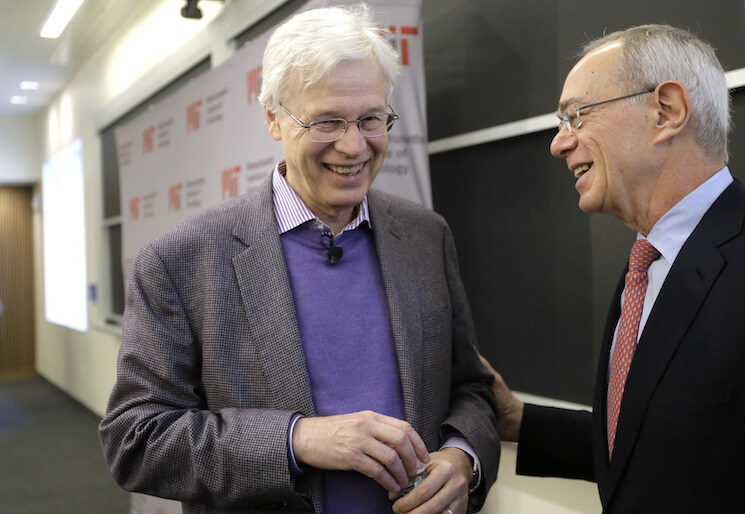A Nobel Prize for modeling contracts

Economists Oliver Hart of Harvard University and Bengt Holmström of the Massachusetts Institute of Technology on Monday were jointly awarded the Sveriges Riksbank Prize in Economic Sciences in Memory of Alfred Nobel, better known as the Nobel Prize in Economics. The two researchers were cited for their work in contract theory. The committee has provided an overview of the winning research here. Their contributions, which have given economists tools to think through the best ways to structure contracts—including those between employers and employees, shareholders and management, and insurance companies, sparked a range of commentary from their fellow economists:
- Tyler Cowen’s overview at Bloomberg View
- A series of posts by Cowen and fellow George Mason University economist Alex Tabarrok on the two winners and the “Performance Pay Nobel”
- Northwestern University economist Jeff Ely’s appreciation of Hart and Holmström’s research
- University of Toronto management assistant professor Kevin Bryan dives into the work of Bengt Holmström
These and other commentators note that at a very basic level the cited research on contracts shows they can be very hard to design if it’s hard for the person paying for a service to observe the provider’s effort. If you’re paying someone to produce a certain number of widgets, for example, then setting up that contract is quite easy. If enough widgets are produced, then the provider gets paid the agreed amount of money. But if it’s difficult to see how much effort someone is putting in, then writing a contract can be more difficult. This problem, the potential misalignment between a principal (the person paying) and an agent (the person providing the service) when there is asymmetric information (the agent knows how much work they are putting in and the agent doesn’t) is a problem that Holmström’s work centered around.
A good example of this problem is executive compensation. The shareholders of firms often want to structure the compensation of their chief executives to make sure the incentives of the CEOs are aligned with those of shareholders. This thinking leads firms to make executive compensation tied to the price of company stock. But Holmström’s theoretical work emphasizes that the contract should be based on information that is informative of the executive’s effort and performance. A company’s share price could move due to factors outside the executive’s control—say an increase in oil prices in the case of an oil executive. This thinking can also be expanded to situations where teamwork is important and therefore points toward pay that is more salary-based and less tied to share-price performance.
Hart’s work also involves contracts, but focuses more on what happens when contracts can’t be fully specified and are therefore “incomplete contracts.” The applications of his work often focuses less on contracts between individuals and more on contracts between firms. The most famous application of this thinking is about what services should be provided by the government and which should be done by private firms. The choice being, in Hart’s formulation, that private firms are better at innovation and reducing costs while the government is better at quality. This question has particular relevance for thinking about whether the government or private firms should run prisons, with the theory pointing toward government and its emphasis on quality.
Both economists have seen their theoretical research cited for their practical applications. Policymakers in particular who are interested in CEO compensation, mergers and acquisitions, and the privatization of government services may want to be on the lookout for applications of this research.
